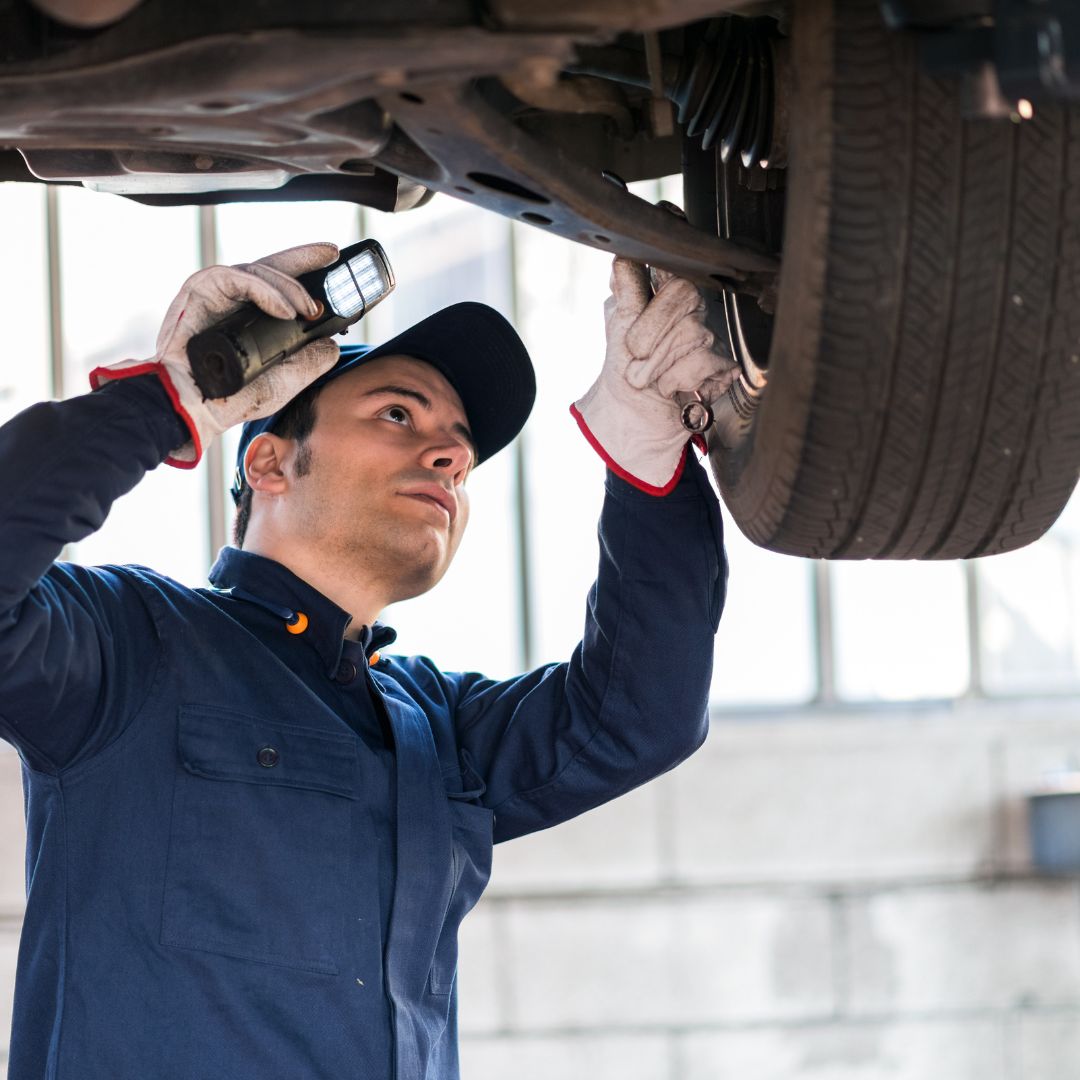In the transport industry, where vehicles are the lifeline of operations, ensuring their safety, reliability, and compliance with regulations is paramount. Fleet vehicle inspections play a crucial role in achieving these goals. Regular inspections help identify potential issues, maintain the optimal condition of vehicles, and ensure compliance with safety standards.
In this article, we will explore the benefits of fleet vehicle inspections for the transport industry and highlight the importance of implementing a comprehensive inspection program.
Enhanced Safety and Risk Reduction
Safety is of utmost importance in the transport industry, and fleet vehicle inspections significantly contribute to creating a safer working environment. Here’s how inspections promote safety:
Identifying Mechanical Issues
Regular inspections enable early detection of mechanical problems, such as faulty brakes, worn-out tires, or malfunctioning lights. Addressing these issues promptly helps prevent accidents caused by vehicle malfunctions.
Preventing Vehicle Breakdowns
Inspections help identify potential issues before they lead to breakdowns on the road. Proactive maintenance and repairs reduce the chances of unexpected failures, minimizing disruptions to operations and ensuring the safety of drivers and cargo.
Compliance with Safety Regulations
Vehicle inspections ensure compliance with safety regulations set by governing bodies. By adhering to these standards, businesses can avoid penalties, maintain their reputation, and demonstrate their commitment to safety and regulatory compliance.
Improved Vehicle Performance and Efficiency
Fleet vehicle inspections contribute to better performance and efficiency, resulting in several operational benefits:
Optimal Fuel Efficiency
“Inspections identify issues that can negatively impact fuel efficiency, such as improper tire pressure, engine problems, or aerodynamic issues. Addressing these factors helps optimize fuel consumption, leading to cost savings and reduced environmental impact.”

Extended Vehicle Lifespan
Regular inspections, combined with timely maintenance and repairs, extend the lifespan of fleet vehicles. By addressing minor issues before they escalate, businesses can avoid premature vehicle replacements and maximize their return on investment.
Reduced Downtime
Proactive inspections and maintenance minimize unexpected breakdowns and repairs, reducing vehicle downtime. This allows businesses to maintain their operational schedules, meet delivery deadlines, and provide reliable services to customers.
Cost Savings and Improved Financial Management
Implementing a robust fleet vehicle inspection program can lead to substantial cost savings and improved financial management:
Reduced Repair Costs
Early detection of issues through inspections allows for timely repairs, preventing further damage and costly breakdowns. Addressing minor repairs proactively is often more cost-effective than dealing with major repairs or replacements.
Lower Insurance Premiums
Insurance providers often offer discounted premiums to businesses with well-maintained and regularly inspected vehicles. By demonstrating a commitment to vehicle safety and risk reduction, businesses can potentially negotiate lower insurance costs.
Avoidance of Fines and Penalties
Regular inspections help businesses ensure compliance with safety and regulatory standards, minimizing the risk of fines and penalties associated with non-compliance. Avoiding legal consequences contributes to overall cost savings.
Enhanced Reputation and Customer Satisfaction
Maintaining a reliable and well-maintained fleet through inspections positively impacts a business’s reputation and customer satisfaction:
Professional Image
A well-maintained fleet reflects professionalism and reliability, enhancing a business’s image in the transport industry. Customers are more likely to trust companies that prioritize safety and invest in the maintenance of their vehicles.
Timely and Reliable Service
By minimizing breakdowns and delays, businesses can provide timely and reliable service to their customers. This not only fosters customer loyalty but also attracts new clients who value punctuality and efficiency.
Regulatory Compliance and Legal Protection
Regular vehicle inspections ensure compliance with industry-specific regulations and standards. By adhering to these requirements, businesses can avoid legal consequences, penalties, and potential liability in the event of accidents or incidents.
Proof of Due Diligence
Implementing a comprehensive fleet vehicle inspection program provides businesses with evidence of their commitment to safety and due diligence. In the event of legal disputes or insurance claims, this documentation can serve as proof that the necessary precautions were taken to maintain safe and roadworthy vehicles.
Mitigation of Liability
By regularly inspecting and maintaining fleet vehicles, businesses mitigate their liability in case of accidents caused by vehicle defects. Proper documentation of inspections and repairs demonstrates proactive efforts to prevent incidents and protect the well-being of drivers, passengers, and other road users.
Implementing an Effective Fleet Vehicle Inspection Program
To maximise the benefits of fleet vehicle inspections, businesses should establish a structured and well-executed inspection program. Here are some key steps to consider:
Define Inspection Standards
Establish clear inspection standards and procedures based on industry regulations, manufacturer guidelines, and internal policies. These standards should cover all critical components and systems of the vehicles, including brakes, tires, lights, suspension, steering, and safety equipment.
Schedule Regular Inspections
Develop a schedule for regular inspections based on factors such as vehicle usage, mileage, and operating conditions. Consider both routine inspections and more comprehensive inspections at specified intervals to ensure thorough evaluation of the vehicles’ condition.
Train Inspection Personnel
Provide training to designated personnel responsible for conducting inspections. They should be familiar with the inspection standards, procedures, and documentation requirements. Training should also cover the identification of common issues, proper reporting, and follow-up actions.
Utilise Technology
Leverage technology such as digital inspection forms and mobile applications to streamline the inspection process. Digital platforms enable efficient data collection, reporting, and analysis, making it easier to track vehicle conditions, identify recurring issues, and schedule necessary repairs.
Track Inspection Results
Maintain comprehensive records of inspection results, including identified issues, repairs performed, and maintenance history. This information helps track the overall health of the fleet, identify trends, and ensure compliance with regulatory requirements.
Address Identified Issues
Promptly address any issues identified during inspections. Prioritize repairs based on severity and potential impact on safety and vehicle performance. Maintain a system for tracking and documenting repairs, ensuring all necessary actions are taken to resolve identified problems.
Promote Driver Involvement
Encourage drivers to report any concerns or issues they notice during their daily vehicle inspections. Their feedback can provide valuable insights into potential problems that may require attention, contributing to early detection and timely resolution.
Continual Improvement
Regularly review and update the inspection program based on feedback, emerging industry standards, and technological advancements. Seek input from inspection personnel and drivers to identify areas for improvement and refine inspection processes.
Conclusion
Fleet vehicle inspections are a vital component of maintaining safety, operational efficiency, and regulatory compliance in the transport industry. By implementing a comprehensive inspection program, businesses can enhance safety, reduce risks, optimize vehicle performance, and realize significant cost savings. Regular inspections contribute to a positive reputation, improved customer satisfaction, and legal protection. With careful planning, training, and the utilization of technology, businesses can establish an effective fleet vehicle inspection program that ensures the longevity and reliability of their fleet while meeting the highest standards of safety and compliance.



